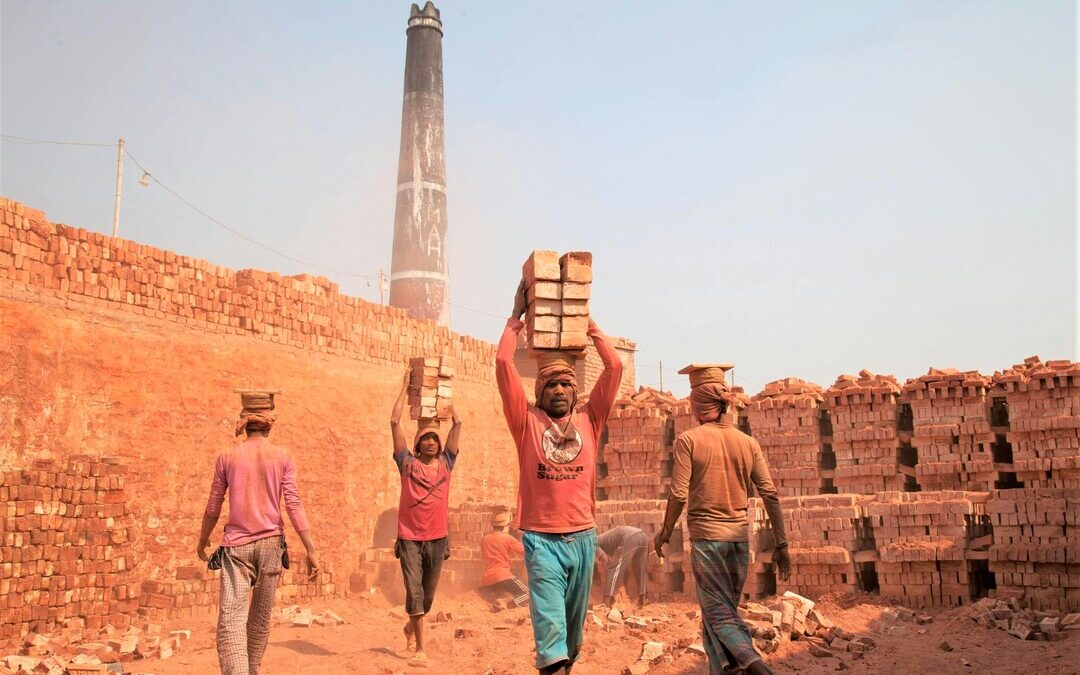Bangladesh Brick Kilns Cut Emissions After Training Initiative, Study Finds
Training program helps Bangladesh brick kilns cut emissions, boost profits and improve air quality through simple operational changes.
Brick kiln owners in Bangladesh significantly reduced greenhouse gas emissions and improved air quality after receiving training in energy-efficient practices, a new study shows, offering a low-cost model to combat pollution in South Asia’s informal industrial sector.
The research, published in Science and led by Boston University School of Public Health in collaboration with Stanford University and local partners, found that a training and support program delivered during the 2022–2023 brickmaking season prompted 65 percent of the participating kiln owners to adopt cleaner practices.
Simple Changes Yield Major Environmental Gains
These changes, such as improved brick stacking and switching to powered biomass fuel, led to a 23 percent drop in energy use and 20 percent reductions in carbon dioxide and fine particulate matter or PM2.5 emissions.
Researchers estimate the intervention’s social benefits outweighed its costs by a factor of 65 to 1, driven largely by reduced CO₂ emissions valued at $185 per metric ton.
“Brick manufacturing is central to development, urbanization, and construction in Bangladesh and across South Asia, but the industry has not experienced much innovation,” said lead author Dr. Nina Brooks, assistant professor at Boston University. “Our findings demonstrate that kiln owners are willing to embrace simple changes that protect human and environmental health when they have the knowledge and training—and when those changes deliver tangible economic gain.”
The study evaluated 276 brick kilns and found that even without legal enforcement, owners were motivated to adopt energy-saving measures when presented with economic rationale and technical support.
Using more complete fuel combustion techniques reduced emissions, produced higher-quality bricks and cut coal costs.
Brick Industry’s Oversized Role in National Emissions
Bangladesh produces approximately 27 billion bricks annually, with the sector accounting for 17 percent of the country’s CO₂ and 11 percent of PM2.5 emissions. Despite regulations banning firewood as fuel and requiring distance from schools and hospitals, enforcement is limited and most kilns operate informally.
“The people working there really make all the difference,” said study coauthor Debashish Biswas, an assistant scientist at Bangladesh-based research institute icddr,b. “If the workers aren’t taken care of, things just don’t run smoothly.”
The study also highlighted that kiln owners were often unaware of the best practices for operating zigzag kilns, already designed to be cleaner, or of their potential profitability.
Some feared the interventions were too complex for workers to implement, pointing to a need for improved worker training and alignment of labor conditions with business goals.
Scalable Solutions for South Asia and Beyond
If all zigzag kiln operators in Bangladesh adopted the improved practices, the researchers estimate national CO₂ emissions could fall by 2.4 million metric tons in one season, representing a 2 percent cut in annual emissions.
“This is a promising example of how informal industries can adopt cleaner practices from within,” said Dr. Sameer Maithel, coauthor and advisor at Greentech Knowledge Solutions in New Delhi. “There are several such innovations being practiced in the field that need to be identified and scaled.”
The research team is now exploring how to scale the intervention across other countries with similar brickmaking industries, such as India and Nepal, and to apply the approach to other informal sectors.
Nirmal Menon
Related posts

Subscribe
Error: Contact form not found.


